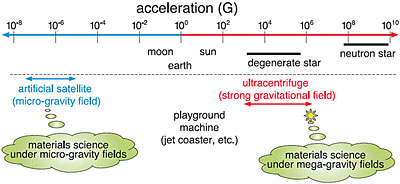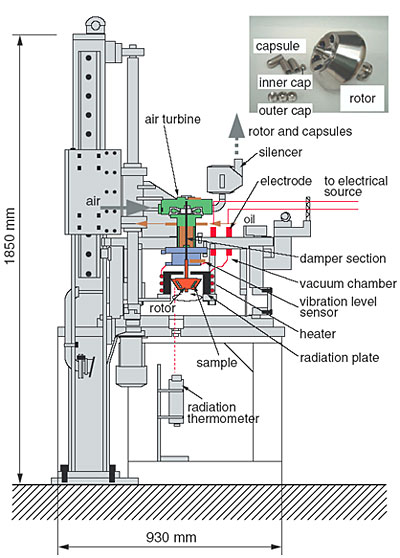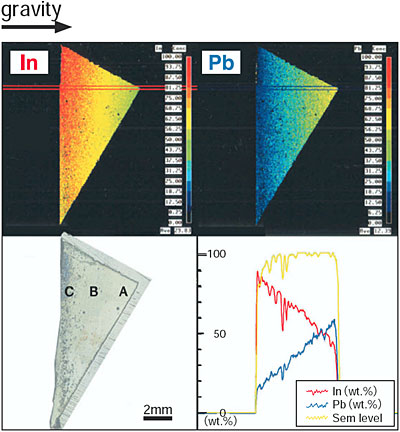Macro-particles such as mud can form sediment in liquid on the earth, or Brownian particles can be concentrated by means of a conventional ultracentrifuge. It is interesting to inquire what will happen to matter under ultra-strong gravitational fields at the 1 million G level (mega-gravity fields), conditions which may exist only on a degenerate star or neutron star (Fig. 7-9). Materials science under mega-gravity fields (~106 g) has remained unexplored, while effects of micro-gravity fields (10-6 ~g) have been explored extensively. Our group is now unique in pursuing such research, with the goal of exploiting a new field of materials science.
We have recently developed an ultracentrifuge apparatus for materials processing under mega-gravity fields (Fig. 7-10). This apparatus can generate ultra-strong gravitational fields of over 1 million G at temperatures over 500 degree Celsius for a period of 100 hours or more. The potential energy and sample volume have been increased by factors of >2 and >10, respectively, compared with a similar facility at Kumamoto University.
We have performed ultracentrifuge experiments mainly on several alloys with low-melting temperatures. We would like to show results for an In-Pb alloy as an example. Fig. 7-11 shows EPMA-derived data for a specimen following ultracentrifuge treatment. An atomic-scale graded structure and resulting change in lattice parameters have been observed. In addition, a Pb-rich phase and an In-rich phase have appeared in strong- and weak-gravitational field regions, respectively. These results showed that a graded structure has been formed through sedimentation of substitutional (Pb) atoms.
We have realized the sedimentation of substitutional atoms as well as chemical reactions on metals, semiconductors, organic compounds, etc. Under a mega-gravity field, the difference in potential energy between atoms is comparable with thermal energy. Such fields, therefore, can induce changes in molecular-crystal structure, and in the electronic structure of condensed matter, in addition to simple sedimentation of atoms. Our future plans are to perform mega-gravity experiments on a variety of materials over a wide range of temperatures. An investigation of isotope separation will also be an important theme.
|


